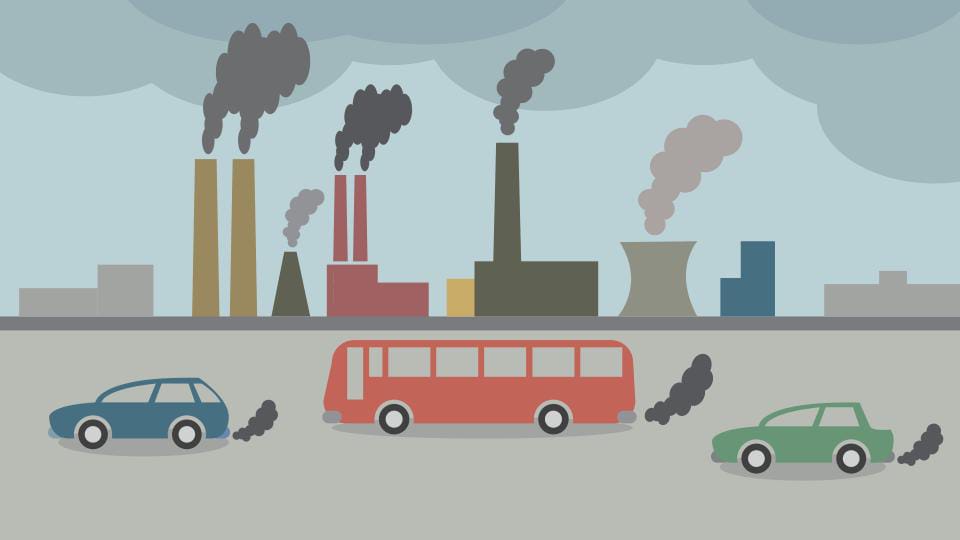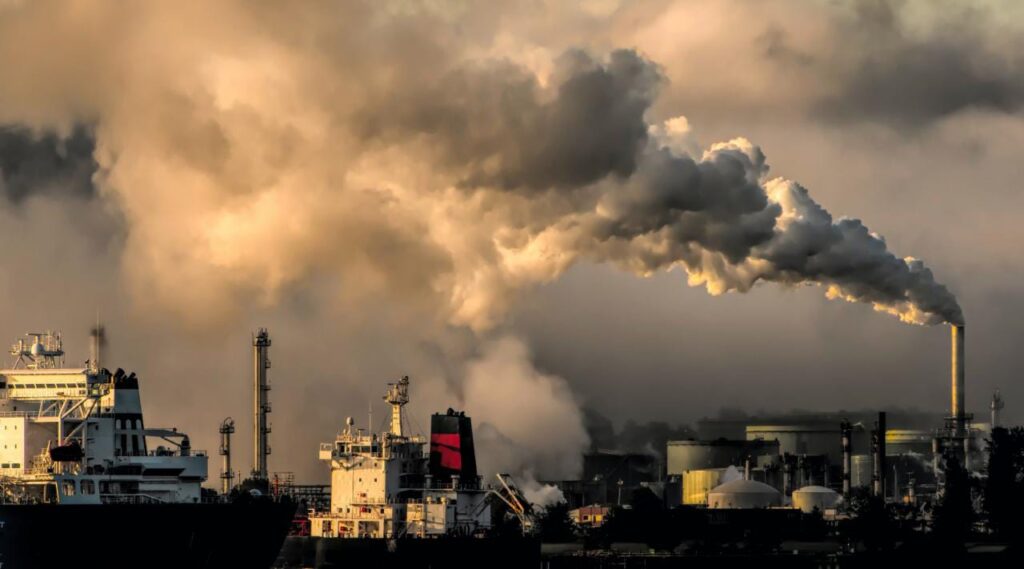The introduction of contaminants, organic molecules, or other hazardous substances into the atmosphere of the planet is referred to as Air pollution.
- Excessive gases like carbon dioxide and other vapors that cannot be properly eliminated by natural processes like the carbon cycle or the nitrogen cycle can be one example of this.

Types of Air Pollution
- Man-made (Artificial) sources
- These are mostly connected to the burning of various fuel types.
- Clouds of smoke from power plants, industrial facilities (manufacturing activities), waste furnaces, incinerators, and other fuel-burning heating appliances are examples of immobile sources.
- Burning traditional biomass, which includes wood, residues from previous crops, and dung, is the main cause of air pollution in underdeveloped and emerging nations.
- In the management of forests, agriculture, and the re-establishment of prairies, controlled fire is occasionally used.
- An organized fire can be a tool for foresters because it is a recognized component of both the forest and grassland ecosystems.
- The forest is renewed through precise burning, which ignites the emergence of select desirable trees.
- Natural sources
- Natural dirt, generally large tracts of land with little to no vegetation.
- Methane is released when animals, like cattle, break down their food (digest it).
- CO and smoke from forest fires.
- Volcanic activity releases ash, sulphur, and chlorine particles.
- The effects of air pollution on people and the environment are extremely detrimental. The components could be liquid, gas, or solid particles.
- A contamination may be organic or synthetic.
Effects of Air Pollution
- Cardiovascular and Respiratory Complications: Air pollution’s negative effects are upsetting. They are the cause of many heart and breathing problems, along with cancer and other dangers to our health. It is known that more than a few million people have died as a result of the direct or indirect impacts of air pollution. Children who live in locations exposed to airborne pollution are reportedly more susceptible to pneumonia and asthma.
- Global Warming: The quick changes that the globe is observing as a result of global warming are another direct consequence. In case protection and control measures aren’t done immediately, a disaster will soon be upon us due to the rise in global temperatures, climate changes, the rise in sea levels, and the melting of ice from icebergs and frigid locations.
- Acid Rain: When fuels are burned, hazardous gases like NO2 and SO2 are discharged into the environment. When it rains, the water droplets react with these contaminants to generate acidic raindrops, which subsequently fall to the earth. Humans, animals, and crops all suffer severe losses as a result of acid rain.

- Eutrophication: A process where a lot of nitrogen, which is found in some contaminants, transforms into algae on the sea’s surface and negatively impacts fish, plants, and other animal and animal species. It is only because of the existence of this chemical that lakes and ponds have green algae.
- Ozone Layer Thinning: Ozone protects people from harmful ultraviolet (UV) rays by existing in the Earth’s atmosphere (Stratosphere). Because of the presence of chlorofluorocarbons and hydro chlorofluorocarbons in the atmosphere, Earth’s ozone layer is thinning.
Prevention of Air pollution
The following list includes some significant actions that people can take to prevent air pollution.
- Carpooling and using public transportation.
- Putting the lights out of use when not needed.
- Product reuse and recycling.
- Avoid smoking and garbage burning.
- Staying away from the use of fireworks.
Also Read About:

